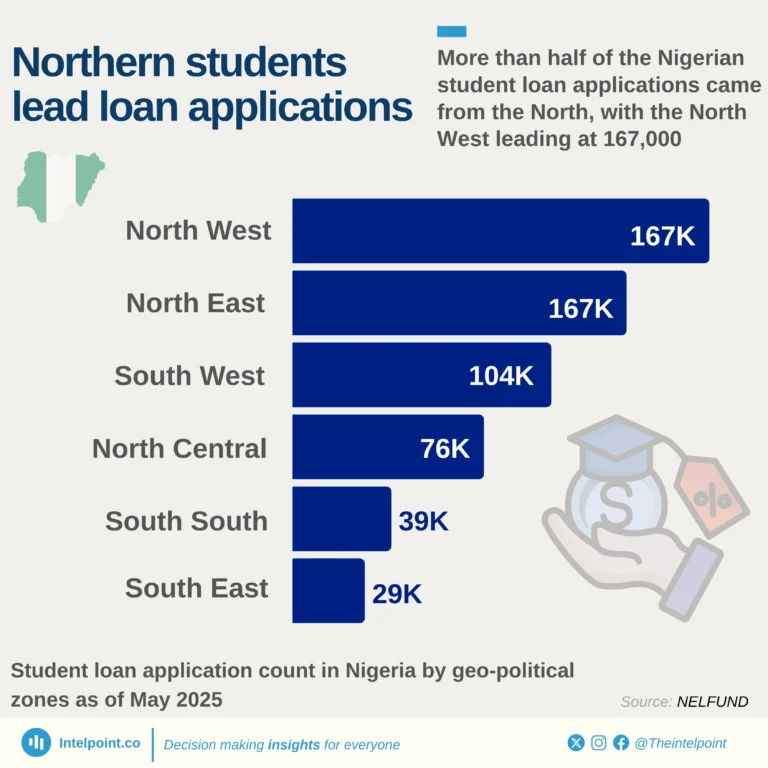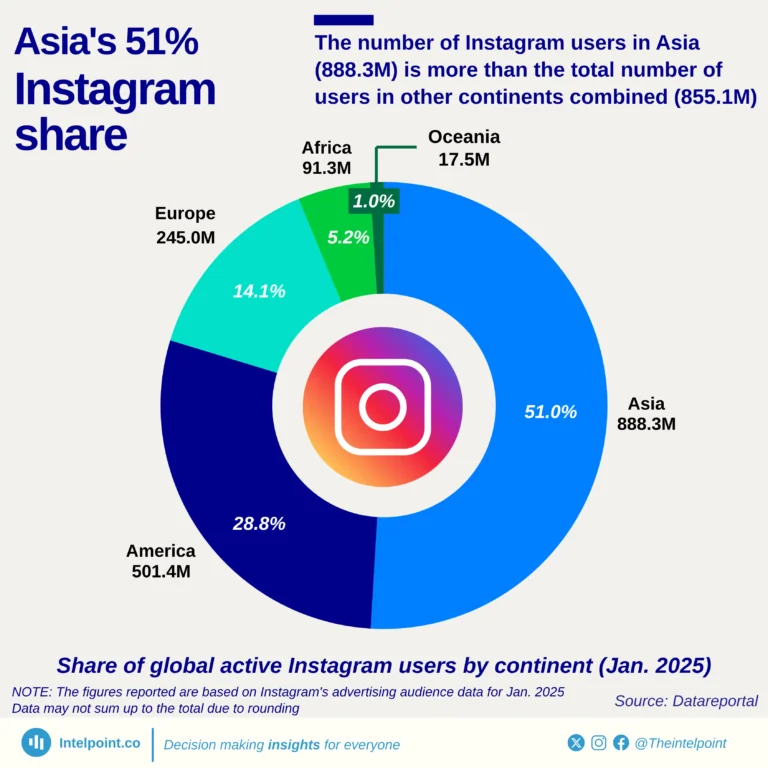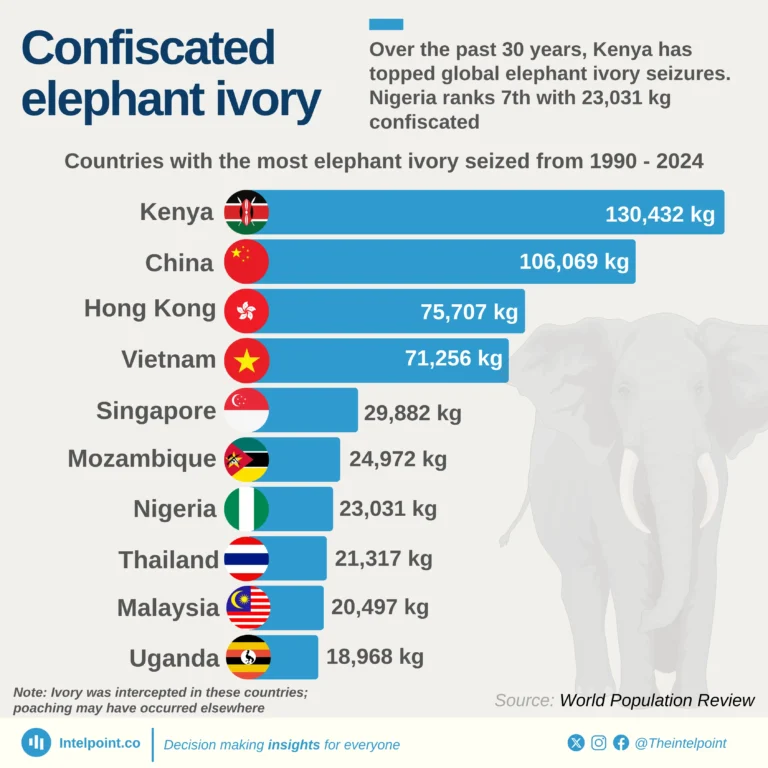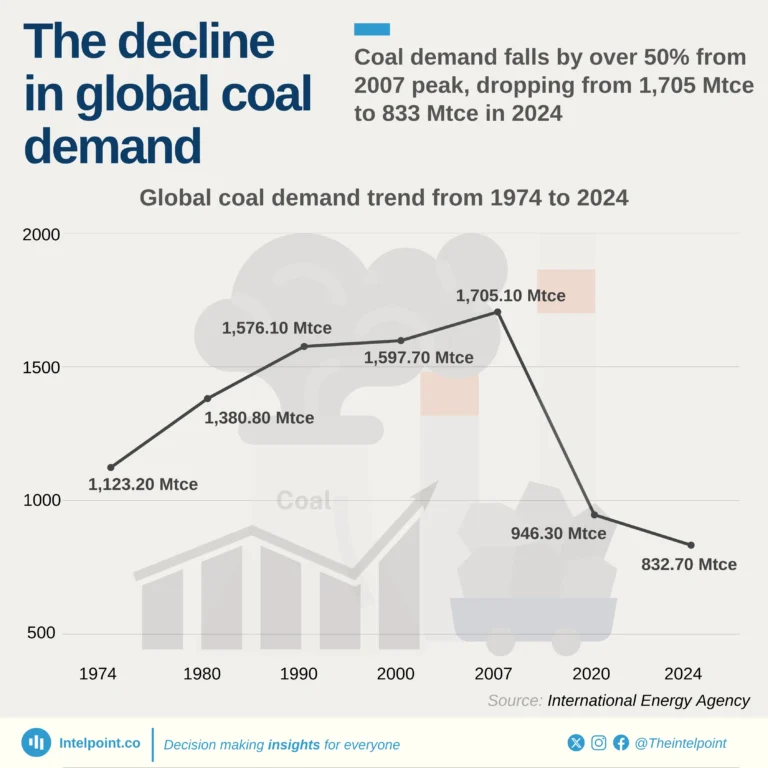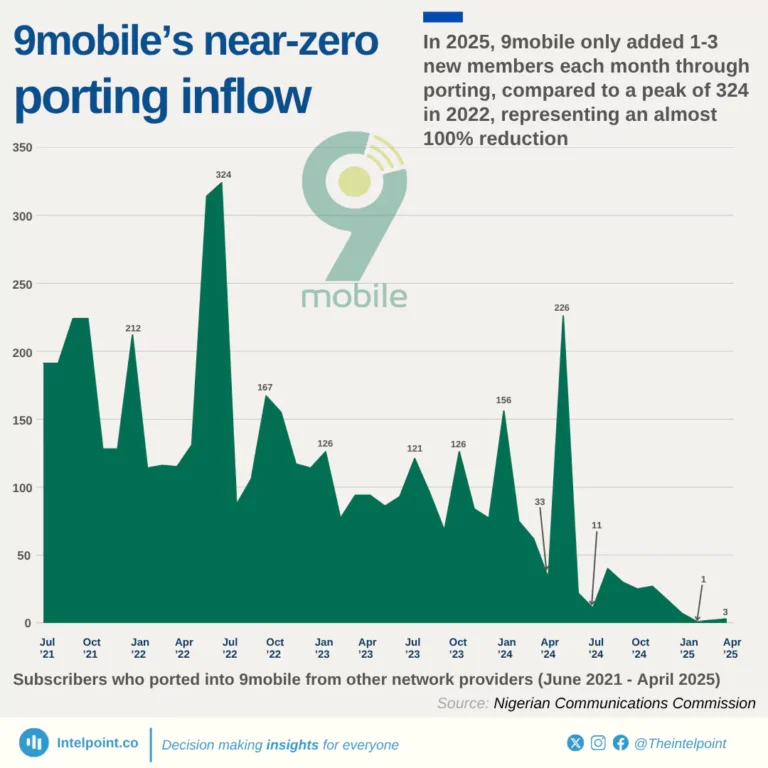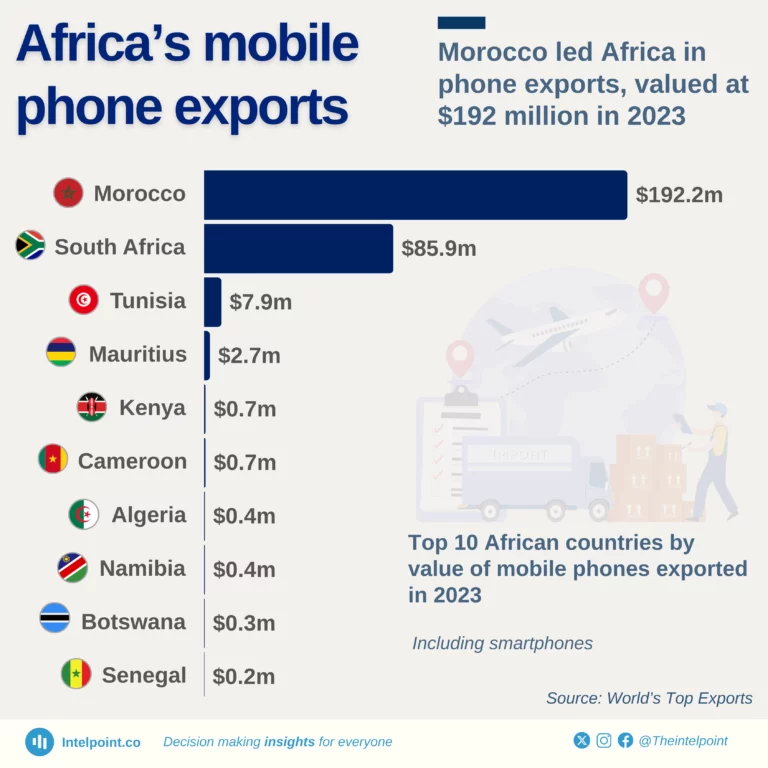
In 2023, Morocco led Africa’s phone export market with $192.2 million, making up 0.07% of the global total, followed by South Africa at $85.9 million, with a global share of 0.03%.
Though Tunisia, Mauritius, and Kenya contributed smaller shares, Tunisia’s remarkable 5,456% growth stands out, positioning it for greater involvement in the global market.
However, Mauritius and Kenya faced declines of -38% and -52%.
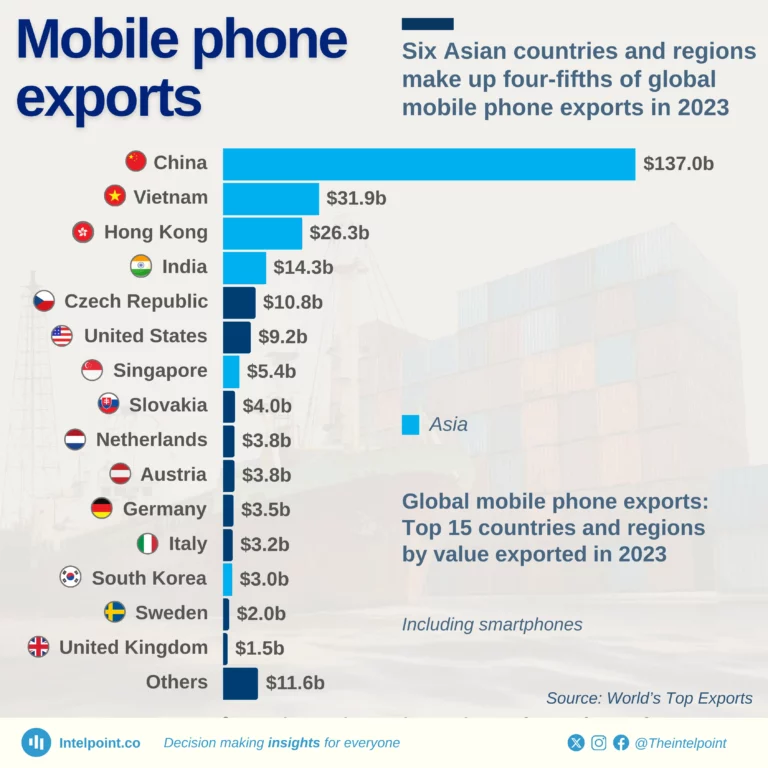
In 2023, the global mobile phone export market totalled $271.42 billion, with China dominating by accounting for $137 billion (50.5%) of total exports.
Vietnam, Hong Kong, and India complete the top four, accounting for 11.8%, 9.7%, and 5.3% of the total, respectively.
Six Asian countries and regions make up four-fifths of global mobile phone export value in 2023, showcasing the region's dominance in the industry.
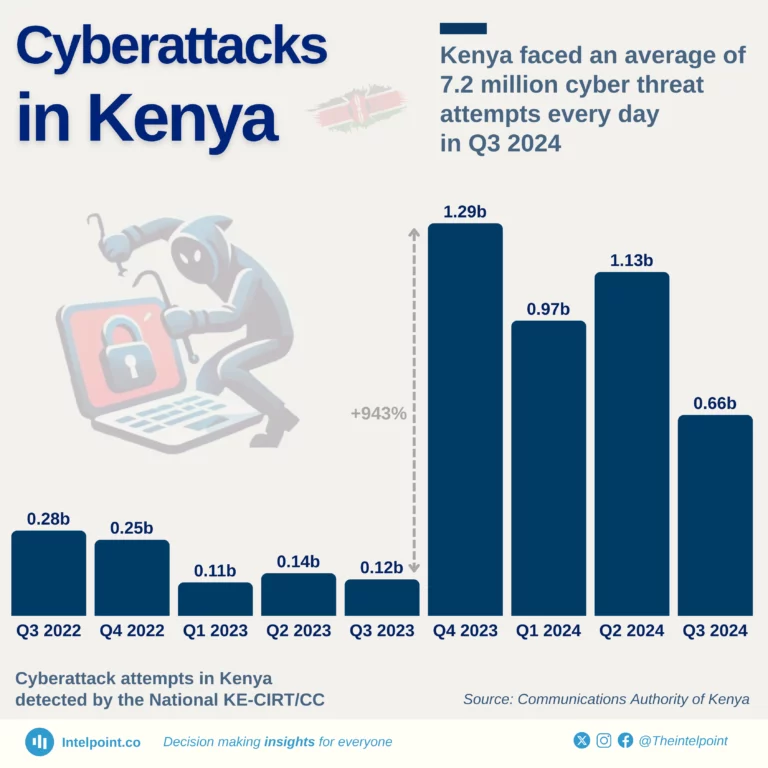
With rising global cyber threats, Kenya, one of Africa's Tier 1 cybersecurity countries (ITU classification), has recorded 2.76 billion cyber threats in the first nine months of 2024.
After a dramatic spike in Q4 2023 (+943%), cyber threats have dropped by 49% in Q3 2024 but remained significantly higher than five quarters ago. Threats rose again in Q2 (+17%) and then dropped in Q3 (-42%).
This surge in attacks led to a recent major breach, where a government agency’s data was sold on the dark web, highlighting the urgent need for stronger security measures.
What actions can Kenya and other countries take to improve their cybersecurity?
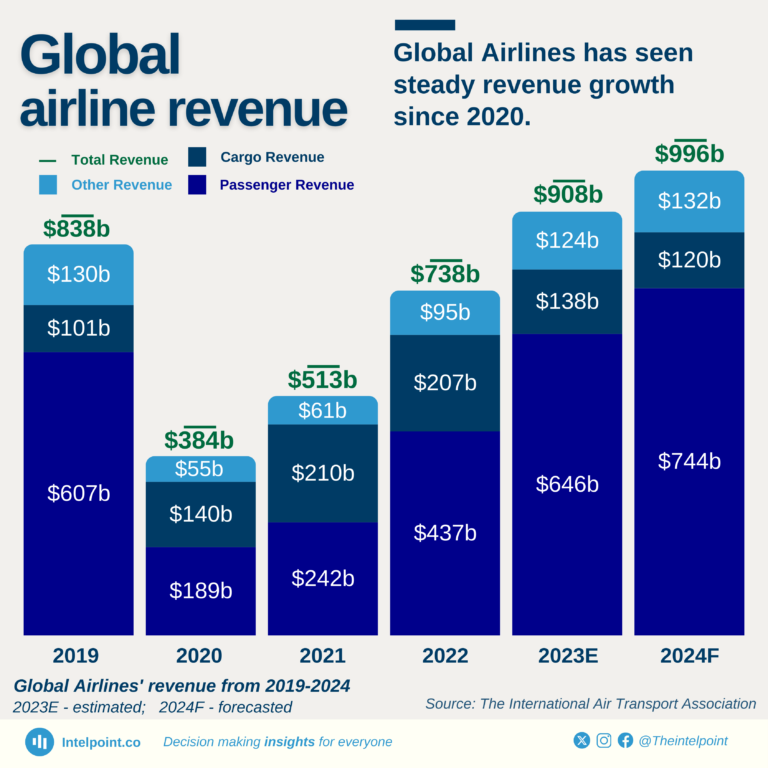
The International Civil Aviation Day is celebrated every year on December 7. Global Airlines experienced over 100% revenue growth from 2020 to 2023, with passenger revenue, the primary driver of this growth.
Cargo revenue has also contributed significantly to the overall increase. This shows the industry is recovering strongly from the pandemic. Notably, cargo revenue has experienced consistent growth since 2019; even during the COVID-19 pandemic, cargo revenue grew from $101b in 2019 to $140b in 2020.
The airline industry's future looks bright, with continued growth expected in the coming years as forecasted in 2024.
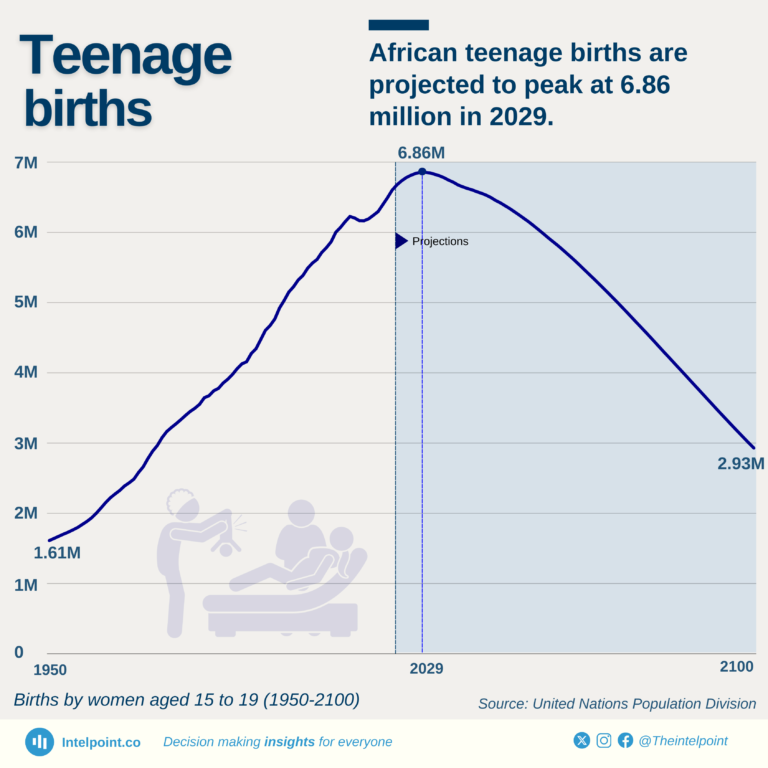
In many communities across Africa, young girls face societal pressures that often cut short their education and lead to early motherhood. Teenage births have consistently risen since 1950 but are projected to peak at 6.86 million in 2029, after which a gradual decline is expected. This projection, from the United Nations Population Division, offers hope for progress as efforts to empower young women and improve access to education and healthcare take root.
Note: Data for teenage births refers to women aged 15 to 19.
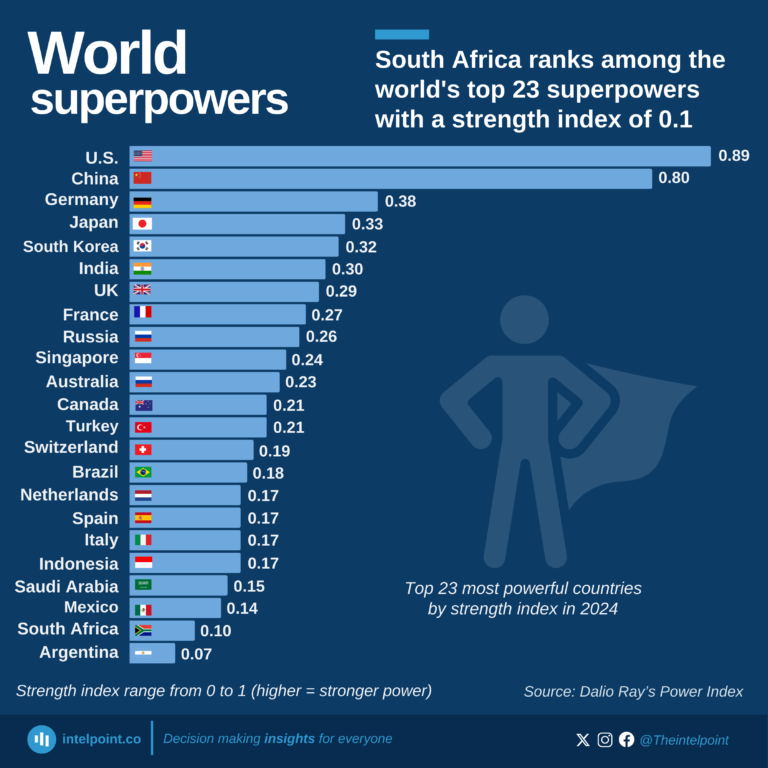
South Africa is rising on the global stage, showcasing its growing influence as it secures its spot as the only African country among the world's top 23 superpowers.
The United States leads with a strength index of 0.89, followed closely by China at 0.80. While traditional powers like Germany and Japan hold their ground, South Africa proudly stands among the top 23 superpowers with a strength index of 0.1. This is the only African country that made the top 23, coming 22nd on the list.
The ranking is based on analysis from Ray Dalio's Great Powers Index 2024. Dalio assessed each nation's strength based on a wide range of metrics, including education, innovation and technology, cost competitiveness, economic output, and military strength.
Note: The Eurozone, ranked third on the list, was removed as it cannot be considered a single country.

Known for its Elephant Cement brand, Lafarge Africa is on its way to reaching its highest annual revenue in the past decade, with its 2024 9-month revenue outperforming full-year revenues for 2023.

Lafarge Africa's journey over six decades is a tale of growth, transformation, and significant milestones. From its roots as WAPCO in 1959 to its current position, the company’s evolution continues, with an acquisition by Huaxin Cement in 2024, pending regulatory approval.

In 2023, 54% of bribes in Nigeria were directly solicited by public officials, while 23% involved subtle hints or indirect demands. Bribes were commonly exchanged in specific locations, with 36% occurring in the homes of public officials and 35% on the streets. These patterns highlight widespread and deeply entrenched corruption across different spheres of interaction.

Nigeria occupies the 30th spot globally in the English Proficiency Index, achieving a score of 557, just behind Kenya (581) and South Africa (594). As one of Africa's linguistic leaders, this ranking highlights Nigeria’s strength in English proficiency, a vital skill driving communication, business, and education across the continent.
This data comes from the EF English Proficiency Index, which aggregated the test results of 2.2m adults from 113 countries and regions. Countries where English is the primary native spoken language are not included in this ranking. Ranks are determined by each country’s average score in the EF Standard English Test (EF SET).

Over the years, many African countries, including Nigeria, have experienced economic turbulence caused by fluctuating global markets and domestic challenges. However, amidst these challenges, there’s hope as IMF economic forecasts point toward growth.
According to the IMF, GDP per capita in Nigeria and Africa is projected to increase from 2025 after years of stagnation and decline. Nigeria’s GDP per capita fell sharply from $2,197 in 2022 to $877 in 2024. Encouragingly, growth is expected with projections of $1,047 for Nigeria by 2029, signaling a slow but steady improvement in living standards.

In 2022, the top 50 terrorist attacks claimed 2,088 lives across 11 countries, with African nations significantly affected. Seven of these nations are African, and together they account for over half of the fatalities. Mali alone recorded 421 deaths, Burkina Faso recorded 317 deaths, while Nigeria and Somalia saw 212 and 200 lives lost, respectively.
